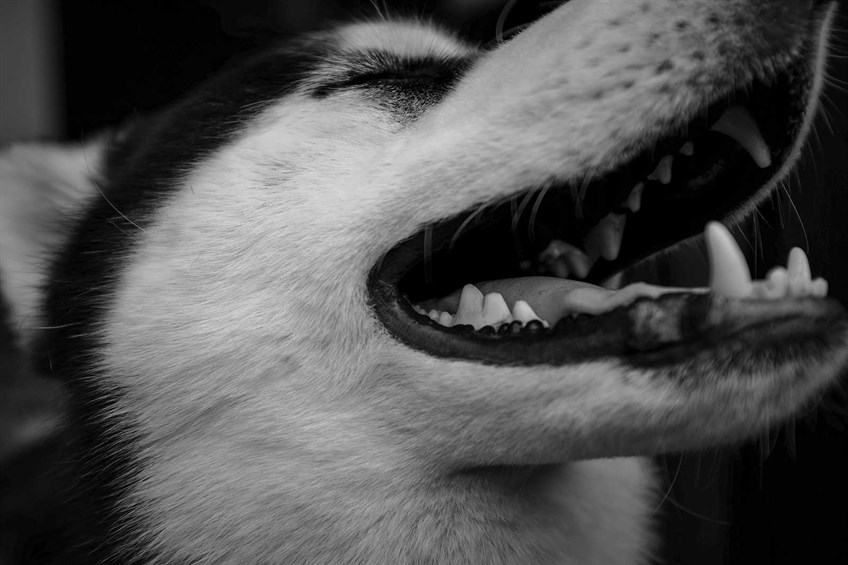How to look after your dog's teeth?
Published date: 04 February 2019

We know the importance of looking after our own teeth, and whilst we have everything from floss, mouthwash and toothbrushes to help us do this, what can we do to make sure our dogs have the same level of dental hygiene?
Vets have expressed concerns over our canine’s dental health, as it’s been reported that over 80% of dogs over the age of three have some form of gum disease or dental problem. Gingivitis can spread to your dog’s organs so it can be dangerous if not addressed.
As a pet parent, you’re responsible for staying on top of this on behalf of your dog – getting into a good routine should hopefully prevent trips to the vets. Being aware of the signs can help you take any corrective action.
SIGNS THAT YOUR DOG’S NEEDS A BETTER DENTAL ROUTINE
Dogs don’t just rely on their mouths for eating and drinking, they also use them to pick things up and investigate, which means that it’s even more important for pet owners to recognise the signs that something may be wrong sooner rather than later:
DISCOLOURATION
A dog’s teeth are not much different from a human’s, so if you think that your pet’s teeth are starting to discolour, it’s time to get them checked out by your vet
BROKEN OR LOOSE TEETH
Some dogs eat or chew things they shouldn’t, such as rocks and hard sticks, so it’s important to regularly check for any broken or chipped teeth
INFLAMMATION
Gums should be nice and pink, but plaque and tartar can begin to cause irritation and even bleeding gums if they’re not checked out. Some dog foods have specific ingredients designed to ward off plaque, and prevention is always better than cure
BAD BREATH
Dogs have an unfortunate reputation for having bad breath - as an owner you will notice if it’s worse than normal. If you haven’t changed their diet recently, and it’s smelling like rotten eggs, this could indicate gum disease, which your vet will be able to diagnose
EXCESSIVE DROOLING
Some dogs are just droolers, but if it’s starting to become more noticeable, this could be an indication of something wrong inside their mouths
LACK OF APPETITE OR A CHANGE IN EATING HABITS
Just like us humans, dogs can go off their food if they’re feeling ill, or if it’s causing them pain to eat. Visit your vet if you notice a loss of appetite, or changes in your dog’s mouth – the experts are best placed to investigate and establish what the cause is
HOW TO BRUSH YOUR DOG’S TEETH
First, the right tools. Many pet stores will have special dog toothbrushes and the sales advisor can point you towards the correct one for your dog
The next step is toothpaste. Human toothpaste could contain cleaning ingredients that are not canine friendly, so always use a specialist pet toothpaste. These are often flavoured like poultry or other dog-friendly tastes to make them more palatable.
When you move onto the actual brushing, introduce the toothpaste first as a treat to get your dog used to the taste. It’s best to do this in the evening to remove all bacteria from food that they have eaten during the day, before it can start to cause damage such as decay and periodontal disease.
Lift your dog’s lip to expose the outer surfaces of their teeth and gums and begin brushing gently, like you would when brushing your own teeth.
Most pets will not let you brush the inner surface of the teeth, so focus on the outer surface making sure to reach the back upper molars and canines, as these are the teeth that tend to build up tartar quickly and are the hardest to reach.
Get your dog used to having their teeth brushed as part of their daily routine; not only will this help prevent the build-up of plaque or tartar, you’ll also be able to spot any of the early warning signs listed above.
Once completed, make sure that you reward your dog (though not with treats, otherwise you’ll undo all your hard work) to reinforce that brushing their teeth is a positive, fun thing to do.
OTHER TIPS FOR KEEPING YOUR DOG’S MOUTH HEALTHY
As well as looking at what other health benefits your dog’s food provides, it’s important to ensure that it includes all the nutrients and vitamins that your dog needs for healthy teeth, such as cranberries. It’s best to avoid food made with by-products and cereal grains as these can stick to your dog’s teeth – opt instead for food made from a mixture of meat and vegetables.
There are several treats on the market aimed at dental hygiene, however they’re no substitute for brushing every day. If you do want to make sure their treats and food are as tooth-friendly as possible, choose dry over wet, as this can help to dislodge plaque near the top of your dog’s teeth.
It’s also advisable to avoid treats and food with a higher percentage of refined carbohydrates, as they lack the enzyme meat contains which helps break down food molecules and avoid sugary treats of course!
If you’re looking for toys that also have dental benefits, the best are larger rubber toys as they don’t splinter, have a bit of give so they’re not too hard on their teeth, and don’t collect debris that could chip your dog’s tooth.
Canagan has joined forces with Proden PlaqueOff to create a delicious grain-free diet that helps reduce plaque, while nourishing your dog as nature intended. See here for more information.
*The content is not intended to be a substitute for professional medical advice, diagnosis, or treatment. Always seek the advice of your veterinarian or other qualified pet health provider with any questions you may have regarding your pet’s health*




Comments
There are currently no comments, be the first to comment.